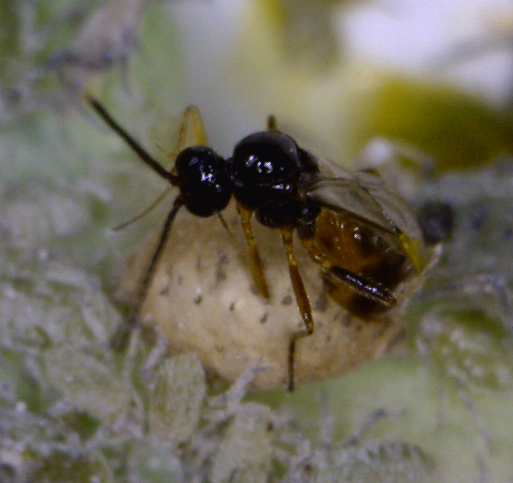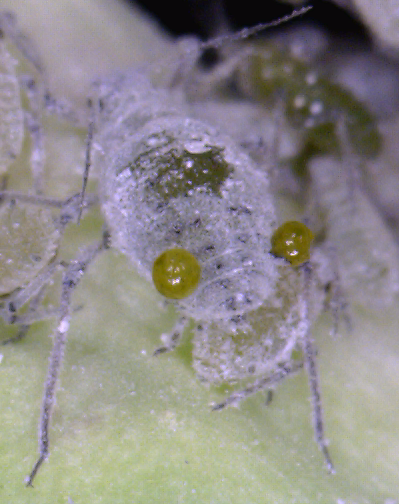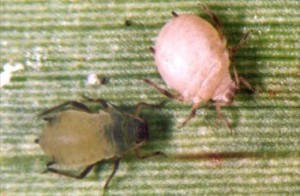
Parasitoid emerging from cabbage aphid mummy.
Aphid parasitoids are small wasps that lay their eggs inside the body of aphids. The larva develops, slowly eating the aphid and killing it before the wasp completes development and emerges from the dead aphid. In the process of developing, the wasp larva spins a cocoon inside the aphid. These swollen, brown ‘mummies’ are evidence of parasitoid activity in an aphid colony. The emerging wasp cuts an exit hole in the remains of its host.
Parasitoids detect aphids from odours produced by both the aphid and the infested plant. Parasitoids are able to detect small numbers of aphids, and therefore have the potential to suppress these small populations, preventing them establishing and increasing to outbreak proportions.
Common and widespread species of aphid parasitoids and their hosts include:

Cabbage aphid with cornical wax secretions after being stung by a parasitoid wasp.
- Lysiphlebus testaceipes – corn aphid, oat aphid and cowpea aphid
- Aphidius colemani – green peach aphid, turnip aphid, corn aphid and oat aphid
- Aphidius ervi – rose grain aphid, blue green aphid and pea aphid
- Diaeretiella rapae – cabbage aphid
Parasitoids don’t have it all their own way. Aphids can fight back against attack by parasitoids. Wasps may be injured by large aphids, or entangled in the cornical wax that the aphids secrete in response to parasitoid activity in the colony.

